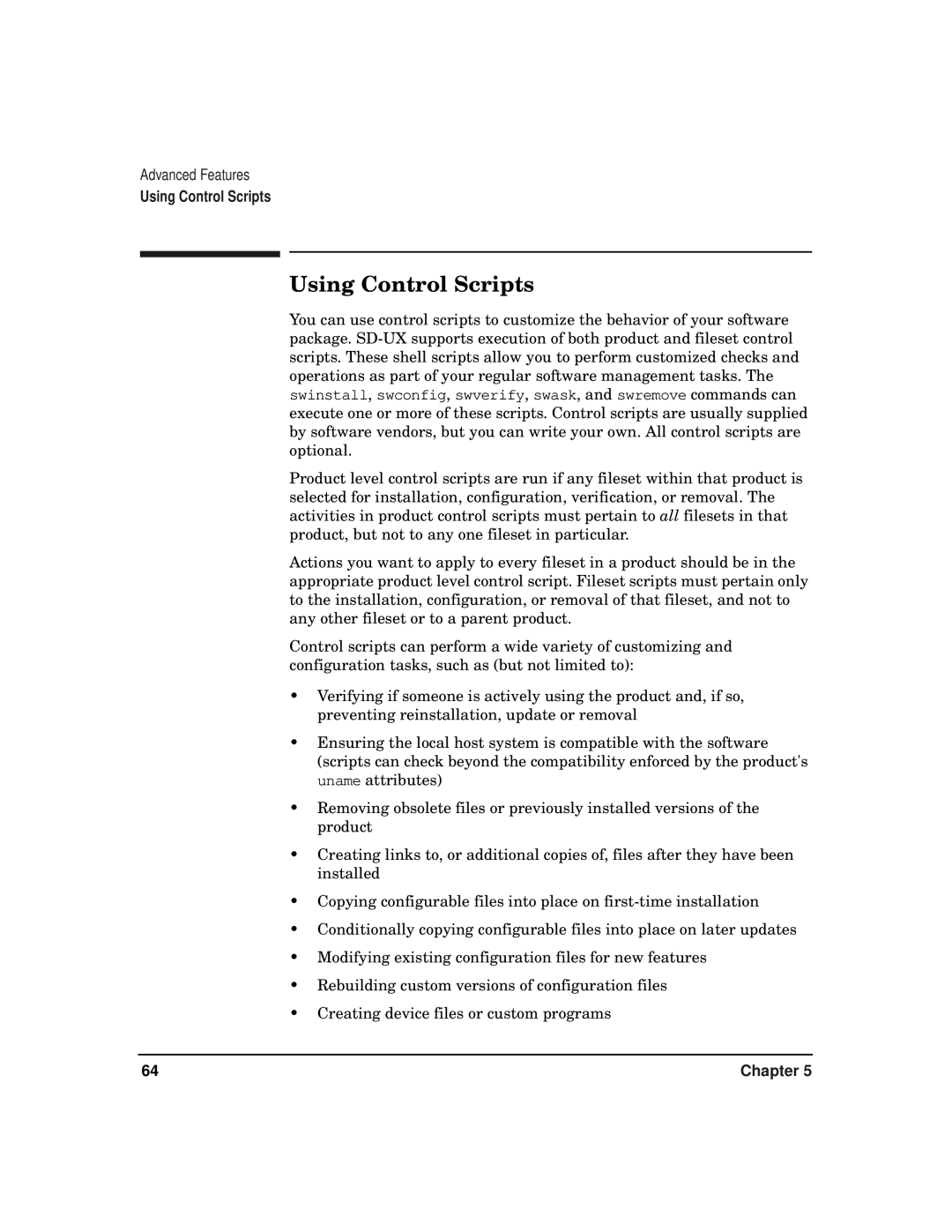
Advanced Features
Using Control Scripts
Using Control Scripts
You can use control scripts to customize the behavior of your software package.
Product level control scripts are run if any fileset within that product is selected for installation, configuration, verification, or removal. The activities in product control scripts must pertain to all filesets in that product, but not to any one fileset in particular.
Actions you want to apply to every fileset in a product should be in the appropriate product level control script. Fileset scripts must pertain only to the installation, configuration, or removal of that fileset, and not to any other fileset or to a parent product.
Control scripts can perform a wide variety of customizing and configuration tasks, such as (but not limited to):
•Verifying if someone is actively using the product and, if so, preventing reinstallation, update or removal
•Ensuring the local host system is compatible with the software (scripts can check beyond the compatibility enforced by the product's uname attributes)
•Removing obsolete files or previously installed versions of the product
•Creating links to, or additional copies of, files after they have been installed
•Copying configurable files into place on
•Conditionally copying configurable files into place on later updates
•Modifying existing configuration files for new features
•Rebuilding custom versions of configuration files
•Creating device files or custom programs
64 | Chapter 5 |
